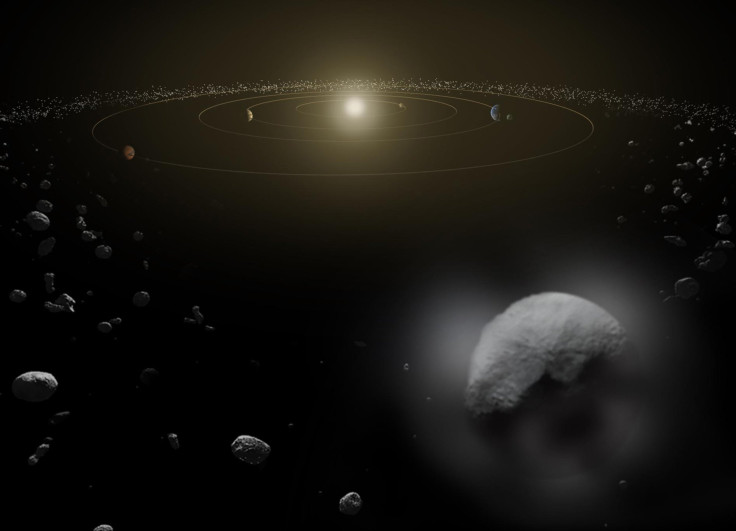At Least 2 Undiscovered Planets Could Be Hidden Near The Edge Of Solar System: Study

Our solar system might be hiding two more planets in the icy darkness beyond Pluto, according to a recent study conducted by a team of scientists in Spain and the UK. The scientists, whose work was published in the journal Monthly Notices of the Royal Astronomical Society Letters, came to the conclusion after studying the orbits of several “Extreme trans-Neptunian Objects (ETNOs),” which are cold, frigid bodies orbiting the sun in large, elliptical paths beyond Neptune.
After analyzing 13 of these objects, the researchers found that the orbits of these objects were different from those predicted by the accepted theory of how the solar system formed. According to the known theory, these objects should have an average distance of 150 Astronomical Units (1 AU is the distance from Earth to the sun, which is roughly 93 million miles), but the ETNOs were found to have widely-varying orbits, ranging from 150 AU to 525 AU, the researchers said, in a statement.
Based on these observations, the scientists speculated that there could be at least two undiscovered planets whose gravitational pull is affecting the orbits and the distribution of ETNOs.
“The exact number is uncertain, given that the data that we have is limited, but our calculations suggest that there are at least two planets, and probably more, within the confines of our solar system,” Carlos de la Fuente Marcos from the Complutense University of Madrid and the study's co-author, said in a statement. “If it is confirmed, our results may be truly revolutionary for astronomy."
However, the researchers added, even if there are undiscovered worlds beyond Pluto, detecting them using current instruments might be extremely difficult, if not downright impossible, because of their distance from Earth, according to media reports.
© Copyright IBTimes 2025. All rights reserved.






















